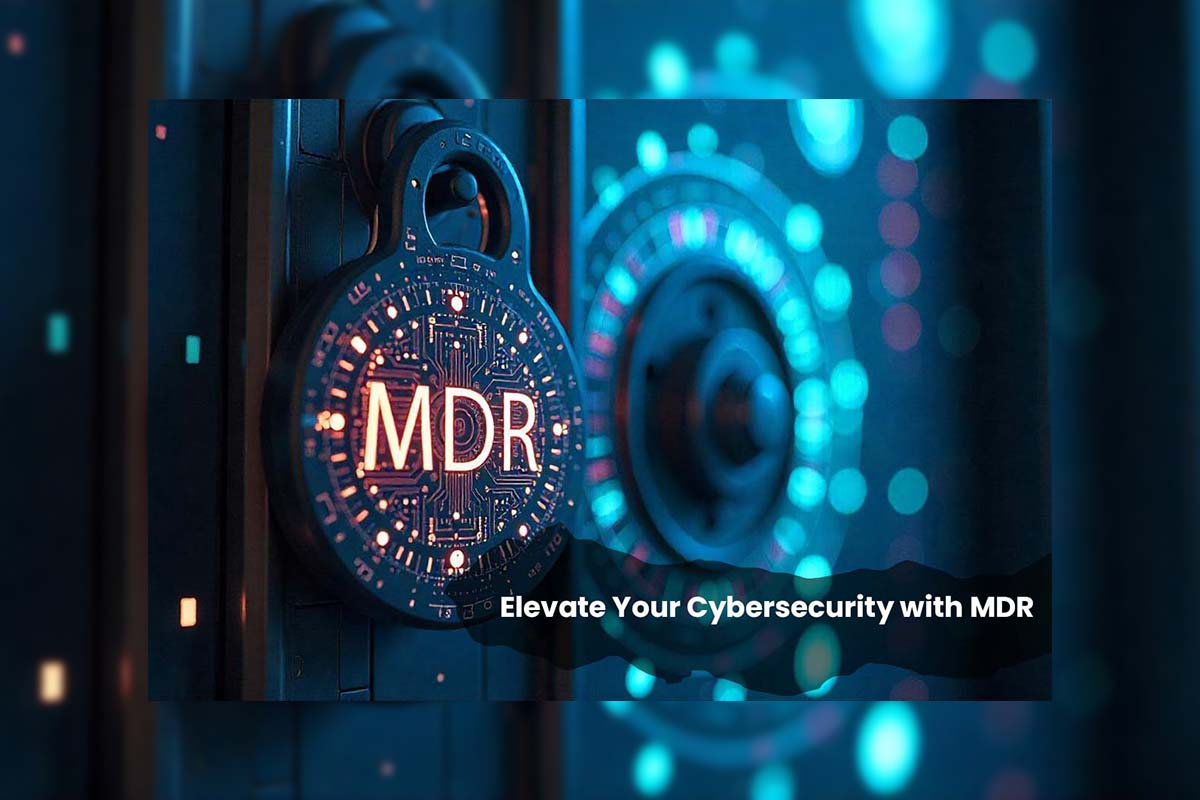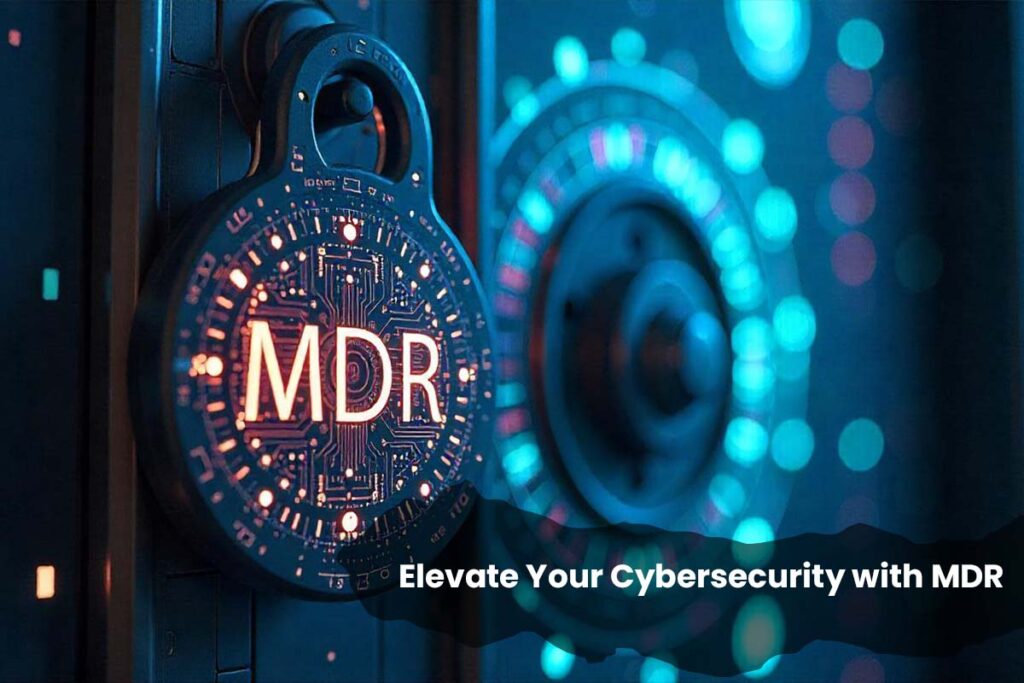





Managed Detection and Response (MDR) is a specialised cybersecurity service designed to proactively monitor, detect, and respond to cyber threats in real time. Unlike traditional security measures that rely on static defences, MDR combines advanced technology with human expertise to continuously analyse potential risks and swiftly mitigate emerging threats. This proactive approach significantly reduces the time attackers have to exploit vulnerabilities, safeguarding organisations from severe disruptions.
Australian businesses, particularly small and medium-sized enterprises (SMEs), are increasingly becoming prime targets for cyberattacks. According to the Australian Cyber Security Centre’s (ACSC) Annual Cyber Threat Report, nearly 43% of all reported cyber incidents in 2022 affected SMEs, highlighting their vulnerability due to limited resources and security infrastructure. For example, a ransomware attack on a mid-sized manufacturing firm in Melbourne led to a complete halt in operations, costing the company millions in recovery expenses and lost revenue.
MDR services address these challenges by providing cost-effective, real-time cybersecurity solutions tailored to meet the unique needs of Australian organisations. By integrating advanced threat detection technologies with expert analysis, MDR empowers businesses to mitigate risks, ensure operational continuity, and maintain compliance with stringent regulatory requirements.
The frequency and sophistication of cyberattacks in Australia have reached unprecedented levels, posing significant risks to organisations across industries. The Australian Cyber Security Centre (ACSC) reported over 76,000 cybercrime incidents in the past year, reflecting a steady rise in both the volume and complexity of malicious activities. These attacks are not only targeting large corporations but also disproportionately impacting small and medium-sized enterprises (SMEs), which often lack robust cybersecurity measures.
Key industries such as healthcare, finance, and retail are particularly vulnerable due to the sensitive data they handle and their reliance on interconnected systems. For instance, ransomware attacks have become one of the most common threats, with a 13% increase globally in 2022, as noted in IBM’s Cost of a Data Breach Report. In one notable case, a ransomware attack on a Queensland-based healthcare provider disrupted patient services for weeks, exposing sensitive patient records and incurring significant financial losses.
Phishing campaigns also remain a persistent challenge, accounting for a large proportion of breaches targeting Australian SMEs. These attacks exploit human vulnerabilities, often leading to unauthorised access to systems and data.
Without proactive measures like Managed Detection and Response (MDR), the financial and operational impacts of such threats can be catastrophic. The ACSC estimates the annual cost of cybercrime in Australia exceeds $33 billion, further underscoring the urgency for businesses to adopt advanced cybersecurity solutions.
The table comparing the costs of ransomware recovery for businesses with and without MDR services:
| Cost Factor | Without MDR Services | With MDR Services |
|---|---|---|
| Average Ransom Payment | $500,000 | $0 (prevented) |
| Downtime Costs (per day) | $50,000 | $10,000 |
| Data Recovery and Forensics | $200,000 | $50,000 |
| Regulatory Fines/Non-compliance | $100,000 | $0 |
| Customer Trust/Reputation Loss | High | Minimal |
| Total Cost | $850,000 | $60,000 |
Managed Detection and Response (MDR) provides a multi-faceted approach to cybersecurity, combining advanced technologies with expert analysis to combat increasingly sophisticated cyber threats. Its effectiveness lies in three core components: threat detection, incident response, and continuous improvement.
MDR employs continuous monitoring powered by artificial intelligence (AI) and human expertise to identify malicious activities before they escalate. Unlike traditional security tools such as firewalls or antivirus software, which rely on static defences, MDR adapts to detect dynamic and emerging threats in real time. For instance, it can detect anomalies in network traffic or unusual user behaviour, flagging potential breaches that static tools may overlook.
A standout feature of MDR is its ability to respond to threats as they occur. Once a threat is identified, MDR analysts work in real time to mitigate its impact, preventing it from spreading or causing significant damage. This proactive incident response ensures that businesses can minimise downtime and data loss, maintaining operational continuity. For example, if ransomware is detected, MDR can isolate affected systems to stop the encryption process immediately.
Cyber threats evolve constantly, and so does MDR. By analysing past incidents and updating detection algorithms, MDR continuously improves its ability to identify and mitigate emerging threats. This ensures that organisations remain protected against not only known vulnerabilities but also zero-day exploits.
Traditional solutions such as firewalls and antivirus software play a defensive role, offering static protection against predefined threats. However, they often fail to detect or respond to advanced threats, such as ransomware or phishing campaigns. MDR, by contrast, provides a dynamic and comprehensive defence, identifying threats in real time, responding proactively, and evolving to meet new challenges.
Managed Detection and Response (MDR) offers a wide range of benefits that address the unique cybersecurity challenges faced by Australian businesses. From proactive threat identification to operational continuity, MDR delivers cost-effective security solutions that safeguard organisations against cyber threats.
One of the most significant advantages of MDR is its ability to identify and mitigate threats before they escalate into full-scale attacks. By leveraging continuous monitoring and advanced analytics, MDR detects anomalies and responds in real time. For instance, an Australian financial services firm avoided a costly ransomware attack when its MDR solution identified and contained the threat during its early stages, preventing any data encryption or disruption to services.
MDR supports businesses in meeting stringent Australian regulatory requirements such as ISO 27001 and PCI DSS. These frameworks demand robust cybersecurity measures, including proactive threat management. By incorporating MDR, organisations can demonstrate their compliance, avoid regulatory penalties, and protect sensitive customer data. For example, an Australian retail company used MDR to meet PCI DSS requirements, ensuring that its payment systems remained secure and resilient against potential breaches.
Outsourcing cybersecurity through MDR is a cost-efficient alternative to building and maintaining an in-house security operations centre. The latter requires substantial investment in personnel, training, and technology. MDR provides access to skilled professionals and advanced tools at a fraction of the cost. A Sydney-based SME reported saving 40% on cybersecurity expenses after switching to an MDR service provider, allowing it to allocate resources to other critical areas of its business.
MDR minimises downtime caused by cyber incidents by swiftly responding to threats and containing potential damage. For example, an Australian healthcare provider experiencing an attempted phishing attack was able to maintain uninterrupted patient care as its MDR solution quickly isolated the affected systems and resolved the issue. This capability ensures that businesses can continue their operations without significant disruptions.
Managed Detection and Response (MDR) services are increasingly vital for Australian businesses, particularly small and medium-sized enterprises (SMEs), as cyber threats grow in both frequency and sophistication. SMEs are often perceived as vulnerable due to limited resources, making them a primary target for malicious actors. A 2023 report by the Australian Cyber Security Centre (ACSC) revealed that SMEs accounted for 43% of reported cyber incidents, highlighting the critical need for robust protection.
Meeting data protection regulations, such as ISO 27001, PCI DSS, and healthcare-specific standards, is essential for avoiding penalties and maintaining operational legitimacy. MDR services provide proactive threat management, helping organisations address vulnerabilities and demonstrate compliance with these frameworks.
Maintaining customer confidence is a cornerstone of long-term success. Data breaches erode trust and can lead to significant reputational damage. MDR solutions ensure the security of sensitive information, strengthening relationships with customers and partners.
MDR services are scalable, making them suitable for organisations of all sizes and industries. Whether it is a healthcare provider protecting patient data or a retail business securing payment systems, MDR can adapt to evolving business needs and cyber risks.
By adopting MDR, Australian businesses not only protect their digital assets but also build resilience, compliance, and trust. This proactive approach ensures they remain competitive in an increasingly digital and interconnected economy.
Selecting the right Managed Detection and Response (MDR) provider is a critical decision for Australian businesses aiming to enhance their cybersecurity posture. The following factors should be carefully evaluated when choosing a provider:
Ensure that the provider has a proven track record and certifications such as ISO 27001, PCI DSS, or CREST accreditation. Certified expertise guarantees that the provider can effectively handle complex cyber threats and comply with regulatory standards.
Cyber threats do not adhere to business hours, making around-the-clock monitoring and real-time response essential. Verify that the provider offers comprehensive 24/7 services to address threats immediately, minimising potential damage.
Australian businesses face unique regulatory requirements. Select an MDR provider that understands frameworks such as the Australian Privacy Act, ISO 27001, and industry-specific standards to ensure compliance and avoid penalties.
Ask potential providers the following:
By choosing a provider that aligns with your organisation’s needs, you can ensure a robust and scalable cybersecurity strategy.
the table comparing top MDR providers and their features:
| Feature | Provider A | Provider B | Provider C |
|---|---|---|---|
| Certifications | ISO 27001, CREST | ISO 27001, PCI DSS | CREST, SOC 2 |
| Response Time | < 15 minutes | < 30 minutes | < 20 minutes |
| 24/7 Monitoring | Yes | Yes | Yes |
| Customisation Options | Tailored to business size | Industry-specific focus | Highly flexible |
| Regulatory Compliance | Strong focus on Australian standards | Global compliance support | Australian and global compliance expertise |
Managed Detection and Response (MDR) is an essential tool for Australian businesses seeking to protect their digital assets against the ever-evolving landscape of cyber threats. By providing proactive threat identification, real-time incident response, and continuous improvement, MDR ensures organisations remain resilient and secure. Its ability to address regulatory compliance requirements, maintain operational continuity, and safeguard customer trust makes it an invaluable component of modern cybersecurity strategies.
For businesses of all sizes, particularly SMEs, the adoption of MDR services offers a scalable and cost-effective solution to mitigate risks and prevent financial and reputational damage. Fort One’s MDR services are tailored to meet the unique challenges faced by Australian businesses, combining advanced detection technologies with local expertise in compliance and risk management.
Do not wait for a breach to expose vulnerabilities. Take the first step towards robust cybersecurity today. Explore Fort1 MDR services to protect your organisation and ensure long-term success.